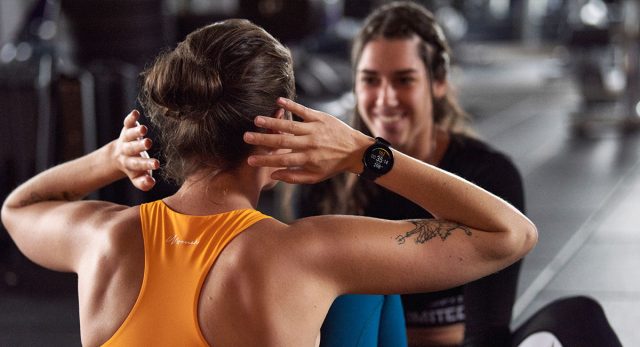Heart rate monitoring is the best way to gauge the intensity of your workout but why would you need to do that in a group fitness class? Isn’t the whole point of group fitness that someone else has already done all the planning and tells you what to do?
True that, but your heart doesn’t know that you’re working out with a group and that you’re supposed to be doing the same workout – your heart’s reaction to exercise is always personal to you.
We asked Les Mills Trainer Jim Berg to elaborate why it’s a good idea to use a heart rate monitor in group fitness classes.
Here are the “must knows” of heart rate monitoring that he listed.
What are the key benefits of monitoring your heart rate?
Feedback, motivation and training at the right intensity. By monitoring your heart rate, you’ll understand when you can push harder, and when you need to recover in a specific workout, thereby working more efficiently and ensuring you’re hitting your training objectives.
By becoming familiar with your heart rate during exercise or a specific class, you’ll see from session to session if you are improving and pushing yourself as hard as you should. You’ll also be able to detect early warning signs if there’s something wrong with your health or your stress levels.
What SHOULD EVERYONE know about heart rate monitoring?
That the main factor for controlling and adjusting their intensity should be based on their individual threshold and daily capacity, not maximum heart rate.
Maximum heart rate varies a lot – so setting training zones based on values determined by the rule of thumb – 220 minus your age – won’t always deliver the opportunity for accurate monitoring.
Having your individual threshold determined in a lab will allow you to accurately monitor which training zone you are in.
are you allowed to adjust EXERCISE intensity in group fitness classes – shouldn’t everyone be doing the same?
In a Les Mills class, everyone is doing the same thing and truly experiencing the “group high”, but that still leaves a lot of room for personal variation.
In many of the programs, these options are incorporated in the coaching and choreography; in LES MILLS GRIT™ for example you are supposed to work to your own personal limit, then rest and then go again.
For other programs, such as BODYATTACK™, you can always adjust the intensity by choosing easier or harder options depending on your training objective. For example, if I did GRIT yesterday, I might not push the intensity quite as much in BODYATTACK today.
In your experience, what are the most common misconceptions about heart rate training?
- Thinking that “more time in red is always better”, and not comparing it to what they did before. The best possible outcome or proof that you are fitter than before is that you are able to maintain a higher heart rate for longer than you used to, or that your heart rate is lower while running or cycling at the same speed or output. So, you need to look back to look forward, and determine how you are tracking.
- Another one is the concept of using heart rate as a “high score” where your only goal is to achieve a specific heart rate (be it high or low), not using what the heart tells you, together with how you’re feeling and your knowledge about your own body, as overall feedback. Your heart rate is always affected by several factors – i.a. that specific exercise, time, daily form and sleep – and should be used as a tool to train smarter, not to “hit the jackpot” based on heart rate alone.
Why should exercisers monitor their heart rate in group fitness classes?
You can learn, grow and improve your understanding of your training and how your body reacts if you use a monitor. You can also reflect on what the monitor said and compare your data with previous stats – this allow you to monitor fluctuations and establish norms.
You can also monitor high intensities. For example, you’ll be able to avoid spending too much time in the 90 percent-plus max zone (see this recent research).
Heart rate training is a truly great way to improve your understanding of your personal physiological response to exercise over time, even if you’re not a tech geek who gets obsessed with the training diagrams and charts that are available. It’s a great, simple tool to get more feedback than just the “feel” of exercise.
To incorporate heart rate training into your group workouts, try out a lightweight fitness watch with sleek design and advanced wrist-based heart rate. If you’re a Les Mills fan, using a Polar fitness watch, you can track your workouts with the workout-specific LES MILLS sport profiles to get an even more accurate understanding of your heart rate zones.
If you liked this post, don’t forget to share so that others can find it, too.
Or give it a thumbs up!
I like this article
Please note that the information provided in the Polar Blog articles cannot replace individual advice from health professionals. Please consult your physician before starting a new fitness program.






